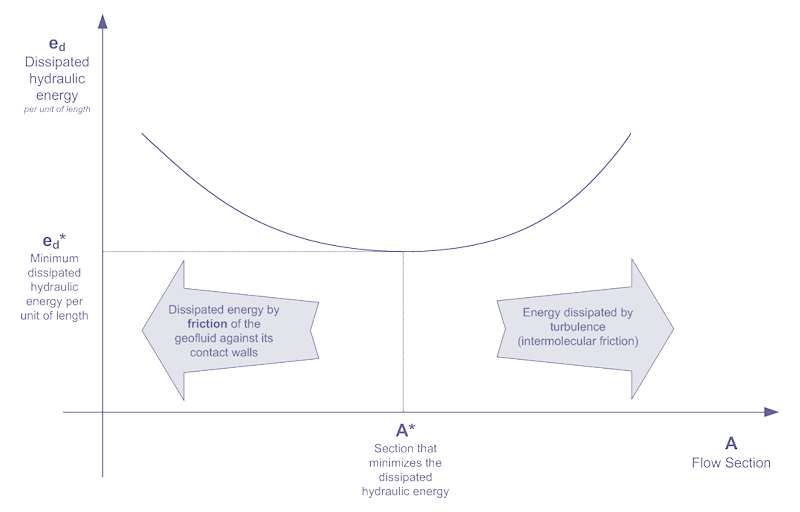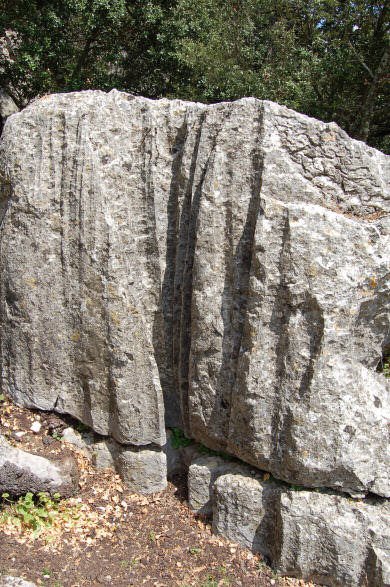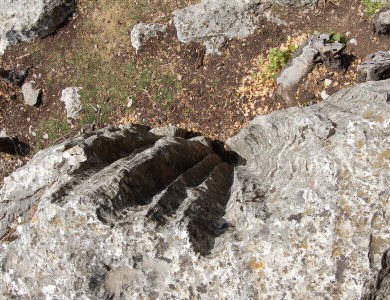Angiogeogenesis
Angiogeogenesis is the formation of water vessels. These vessels originate at the natural leakage points – or exurgence points – of underground water reservoirs. Their section is small because it minimizes the dissipated hydraulic energy. Natural leaks in underground water reservoirs produce a bundle of water vessels. If the flow rate going through these leaks is large, they produce more water vessels, not a larger water vessel.
Angiogeogenesis is the forming of water vessels. This neologism, applicable to hydrogeology and more specifically to angiogeology, is made up of:
- the radical angio - which means vessel - also at the basis of "angiogeology",
- the element geo - indicating that it is related to underground water vessels, (this element must be integrated to distinguish it from angiogenesis which is related to the formation of blood vessels),
- the suffix genesis that comes from the Latin and means : creation, formation.
Water vessels are formed by water reservoirs subjected to a pressure that exceeds their hydrostatic confinement capacity. This pressure comes from :
- the incoming flow into those reservoirs : since they all have an outgoing (efferent) flow they also have an incoming (afferent) flow. Except for geothermal reservoirs incoming flows are detectable by angiogeoscopy (as well as all outgoing flows).
- the thermal supply which is significant only for geothermal reservoirs.
This causes an overpressure that produces one or more leaks (but always a very small number). These leaks are all point-like with respect to the reservoir surface (i.e. they do not take the form of a slit or of a filtration area).
Two laws determine the formation and the preservation of the form of water vessels. These laws are :
- the law of radial determination of water vessels which stipulates how the section of the water vessel is determined. This law is presented hereunder.
- the law of axial determination of water vessels which stipulates the conditions under which water vessels rise to the surface. This second law is introduced with the description of the elevation profile of the underground water flow.
These laws determine how the water vessels get their slender shape and what their overall shape looks like.
Law of radial determination
The law of radial determination stipulates that:
Natural underground water flows minimize the dissipated hydraulic energy
By hydraulic energy, it is meant the mechanical energy of the geofluid. Hydraulic energy does not cover thermal, chemical and atomic energies. This law is mainly useful for flows under a significant pressure gradient (i.e. trough water vessels).
This law determines :
- the cross-section of the flow at the exurgence point,
- the sections of the water vessels originating at the exurgence point.
These two properties are quite different since an exurgence (which is always very localized) give birth to multiple water vessels in most cases (see below).
This law has two key implications that bear on :
1. The number and the form of natural leaks in water reservoirs
A water reservoir does not fissure, it forms a leakage point called, in angiogeology, an exurgence (from the Latin “ex urgere”: to press, to squeeze out of). The section of the reservoir leak tends toward a circle, because this form maximizes the surface/perimeter ratio, therefore also the flow rate/frictions ratio (undergone by the flow against its contact walls at the leakage point). The number of exurgence points per reservoir is inversely correlated with their depth. Most geothermal reservoirs have only one leak.
2. The number and the section of water vessels rising from the natural leaks
When the outgoing flow of a water reservoir is important, that does not result in the formation of a water vessel with a large section. “Large” water vessels do not exist. As shown on the diagram below, the section of a water vessel tends to minimize the energy dissipated by the flow. This minimization results from a compromise between,
- the frictions undergone by the flow against its walls of contact and
- the energy lost by turbulence and internal friction.
In both cases, the energy dissipation is due to frictions. In the first case, it is a liquid - solid friction and in the second case, it is liquid - liquid friction.

Section of a water vessel minimizing the dissipated energy
When the outgoing flow increases, the proportion of fluid which is subjected to frictions against the contact walls decreases. On the other hand, the flow becomes increasingly turbulent. This turbulence also causes energy dissipation. The outgoing geofluid tends to minimize the combined effect of these two energy dissipations.
When the outgoing flow requires a section which exceeds the one corresponding with the minimum dissipation, the number of water vessels increases so that each water vessel produced has a section that comes as close as possible to the optimum. This principle of minimization of the dissipated energy explains the formation of exurgence points producing multiple branches known as connate branches (as shown below).
This optimization applies only to the hydraulic energy (which depends on the pressure, flow rate and potential energy of the the geological fluid), not to the thermal energy (which depends on the temperature and the state of the geological fluid) or, in any case, not in a direct way. The temperature of the geological fluid influences its viscosity and therefore its turbulence threshold.
The section of water vessels being bounded, the efferent flow at the exurgence point produces a bundle of water vessels having a common origin. This bundle can be reduced to one element in the rather exceptional case where the outgoing flow is small.
The figure below shows a typical bundle of water vessels rising from the exurgence point.

Shape of water vessels at the exurgence
An exurgence is detected through angiogeoscopy as a star-like structure of water vessels (this corresponds with the above shape as seen from the ground surface). Such a structure infallibly betrays the presence of a water reservoir. It is produced by all types of reservoirs (geothermal, hydrothermal, aquifers, water table).
The figure below shows how connate water vessels formed at a reservoir exurgence look from above.

Shape of water vessels at the exurgence as seen from above
Connate water vessels spread quite evenly in all directions from the exurgence point where they originate
Geologically the exurgence of a water reservoir appears as follows:

Cross sectional view and view from the top of the same exurgence
The outgoing flow from a water reservoir is concentrated at the exurgence point(s). This is why the wells must be drilled vertically above the exurgence (another collecting point would compete with the natural outgoing flow and therefore be less productive).
The way water vessels rise to the surface (from the exurgence on) is determined by the law of axial determination and derived from this law and from fluid hydrodynamics in the elevation profile introduction.
The reason why water vessels form stable structures is presented in the stabilization mechanisms of their hydrodynamics.

